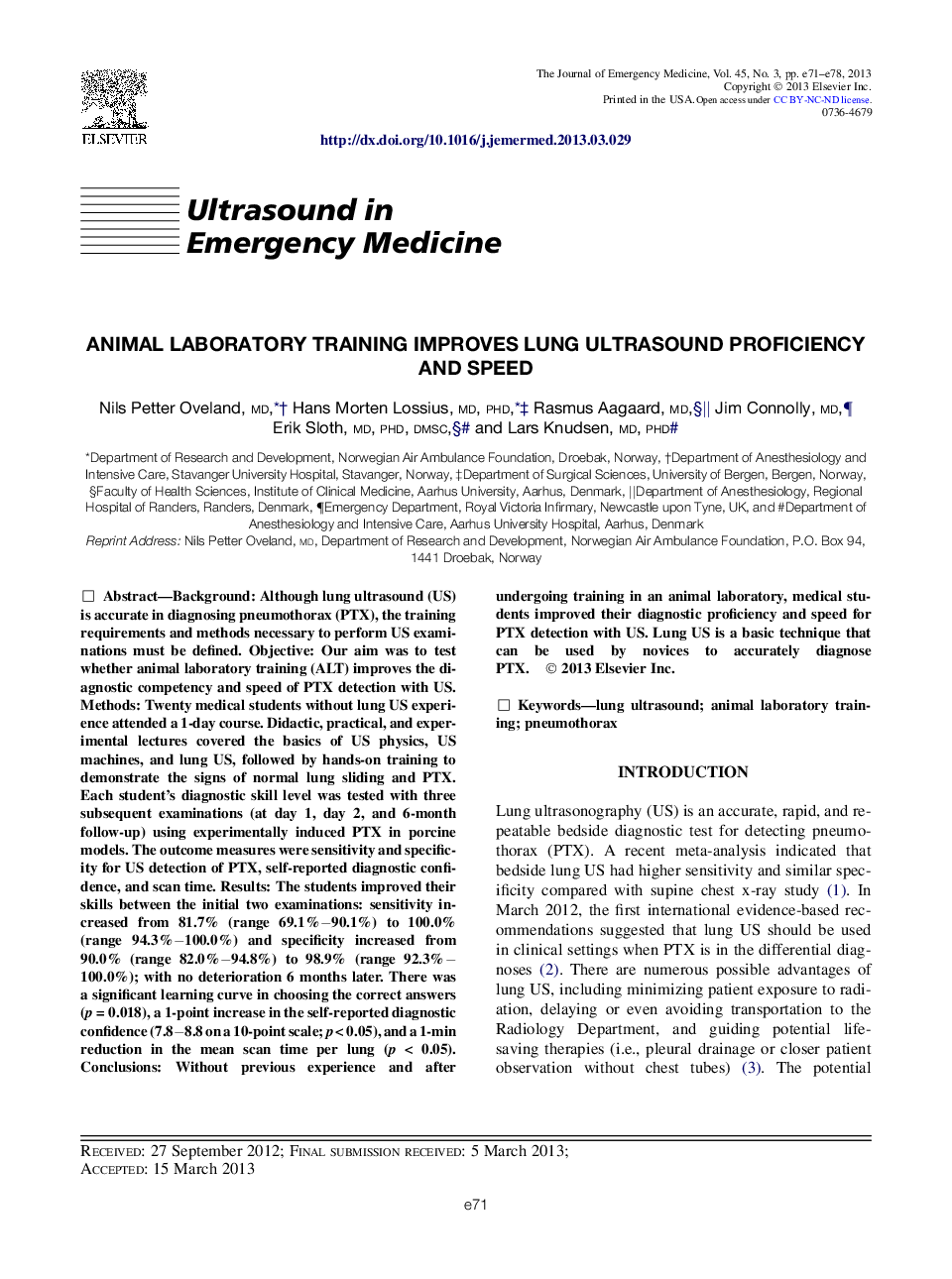| Article ID | Journal | Published Year | Pages | File Type |
|---|---|---|---|---|
| 6085584 | The Journal of Emergency Medicine | 2013 | 8 Pages |
BackgroundAlthough lung ultrasound (US) is accurate in diagnosing pneumothorax (PTX), the training requirements and methods necessary to perform US examinations must be defined.ObjectiveOur aim was to test whether animal laboratory training (ALT) improves the diagnostic competency and speed of PTX detection with US.MethodsTwenty medical students without lung US experience attended a 1-day course. Didactic, practical, and experimental lectures covered the basics of US physics, US machines, and lung US, followed by hands-on training to demonstrate the signs of normal lung sliding and PTX. Each student's diagnostic skill level was tested with three subsequent examinations (at day 1, day 2, and 6-month follow-up) using experimentally induced PTX in porcine models. The outcome measures were sensitivity and specificity for US detection of PTX, self-reported diagnostic confidence, and scan time.ResultsThe students improved their skills between the initial two examinations: sensitivity increased from 81.7% (range 69.1%â90.1%) to 100.0% (range 94.3%â100.0%) and specificity increased from 90.0% (range 82.0%â94.8%) to 98.9% (range 92.3%â100.0%); with no deterioration 6 months later. There was a significant learning curve in choosing the correct answers (p = 0.018), a 1-point increase in the self-reported diagnostic confidence (7.8â8.8 on a 10-point scale; p < 0.05), and a 1-min reduction in the mean scan time per lung (p < 0.05).ConclusionsWithout previous experience and after undergoing training in an animal laboratory, medical students improved their diagnostic proficiency and speed for PTX detection with US. Lung US is a basic technique that can be used by novices to accurately diagnose PTX.
